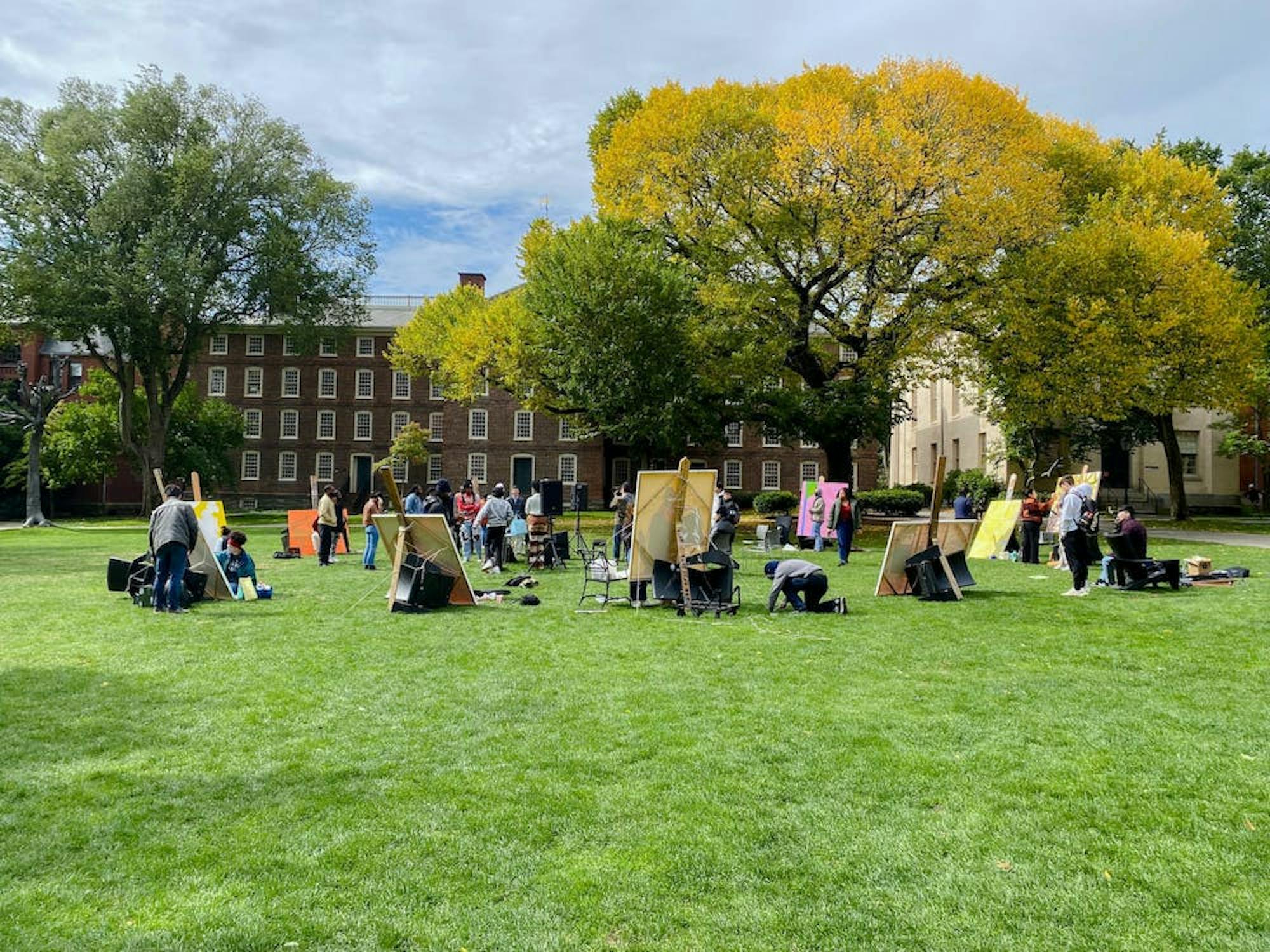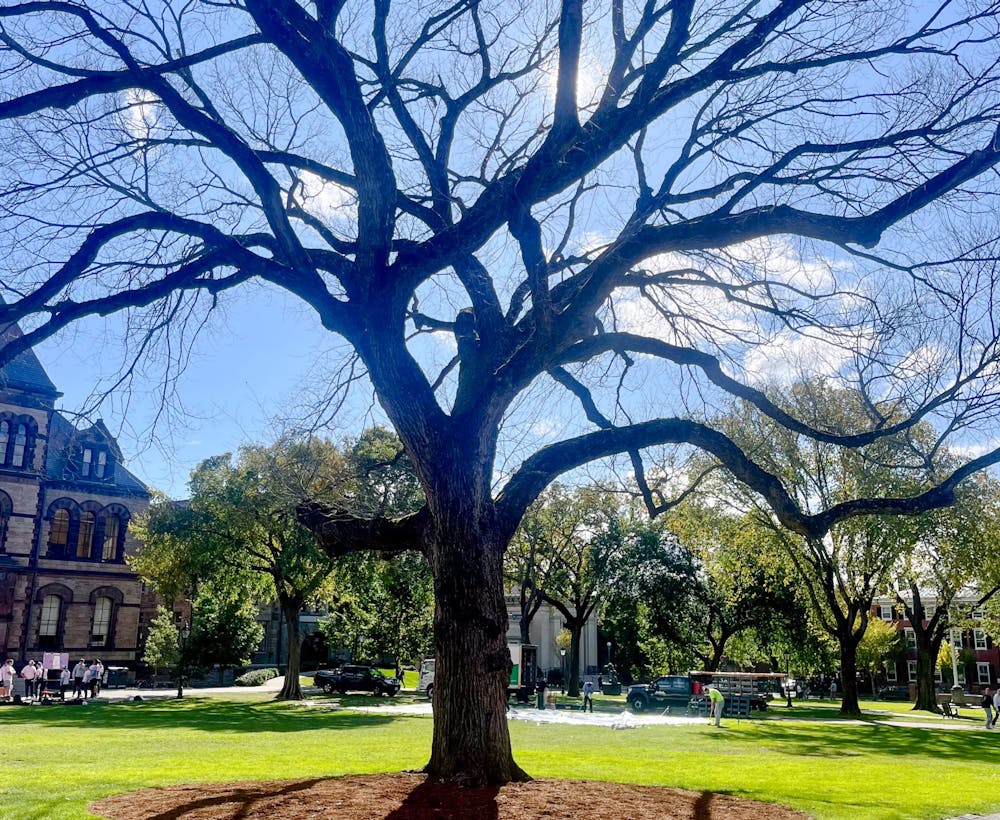As Rhode Island settles into the colors of a New England fall, students and community members may notice one exception to the emblazoned foliage on campus: the American elm tree on the Main Green.
The University Hall-adjacent tree, which the Department of Facilities Management’s groundskeeping department estimates to be between 80 and 120 years-old, has been without leaves since the start of the semester. According to Assistant Vice President of Facilities Operations Paul Armas, that’s a sign of stress.
“The American elm tree is feeling the effects of age, global warming with extreme temperature swings these past few years, and compaction and environmental stresses due to its size and specific location on the Main Green,” Armas wrote in an email to The Herald.
Last year saw regional record-breaking warm days throughout November. This summer was the world’s hottest on record.
Facilities Management has not yet decided on whether to remove, replace or maintain the tree, citing logistical challenges presented by the tree’s size and setting.
“While we're not optimistic about the potential for the tree to return to a healthy state, removing or replacing the tree is something we'll consider only as a last resort, when it's clear there are no prospects for recovery,” Armas wrote.

The American elm, pictured last fall, as students paint for Project Main Green. That season, the tree’s foliage turned bright yellow, which is typical for its species.
While photos from fall 2022 show the tree’s yellow ombre of leaves, Facilities Management noted the tree’s decline that season. This fall, the department requested a test of the tree’s tissue, but it did not indicate any specific diseases, Armas wrote.
Potential diseases include Dutch elm disease, which has severely impacted New England’s elm population since the 1930s. Brown’s campus was not spared and a prominent American elm tree on Thayer street was removed in 2003, followed by the removal of two smaller American elms on the Quiet Green in 2013.
Still, Brown is home to one of the largest institutional American elm tree collections in North America. To preserve such a collection, Facilities Management has been treating all trees with a pesticide injection program. The leafless American elm is going through a special program to increase water and fertilization, inject it with micro-nutrients and air spade its roots to alleviate soil compaction, according to Armas.
“These historic trees are important to Brown from both an environmental standpoint and in terms of what they mean to community members,” Armas wrote. “We'll make every effort to preserve them.”
Haley Sandlow is a contributing editor covering science and research. She is a junior from Chicago, Illinois studying English and French.





